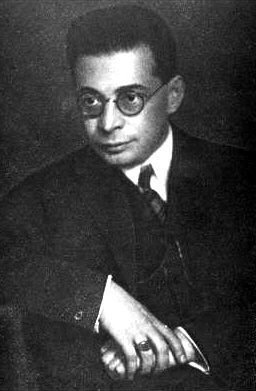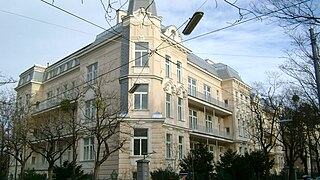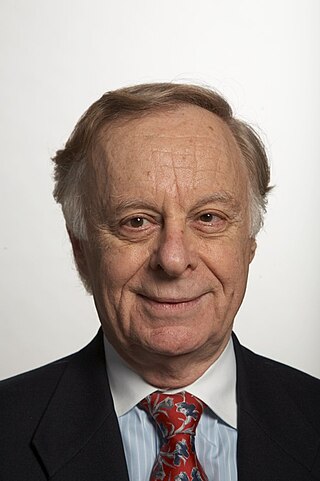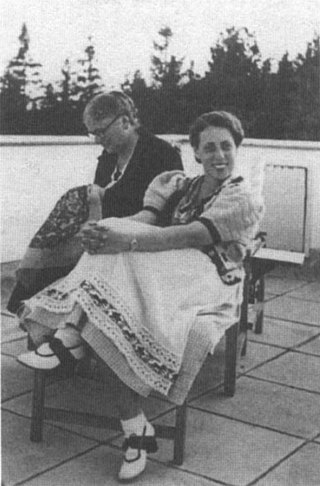Related Research Articles
Psychoanalysis is a set of theories and therapeutic techniques that deal in part with the unconscious mind, and which together form a method of treatment for mental disorders. The discipline was established in the early 1890s by Austrian neurologist Sigmund Freud, who developed the practice from his theoretical model of personality organization and development, psychoanalytic theory. Freud's work stems partly from the clinical work of Josef Breuer and others. Psychoanalysis was later developed in different directions, mostly by students of Freud, such as Alfred Adler and his collaborator, Carl Gustav Jung, as well as by neo-Freudian thinkers, such as Erich Fromm, Karen Horney, and Harry Stack Sullivan.

Sigmund Freud was an Austrian neurologist and the founder of psychoanalysis, a clinical method for evaluating and treating pathologies explained as originating in conflicts in the psyche, through dialogue between a patient and a psychoanalyst.

Sándor Ferenczi was a Hungarian psychoanalyst, a key theorist of the psychoanalytic school and a close associate of Sigmund Freud.

Alfred Ernest Jones was a Welsh neurologist and psychoanalyst. A lifelong friend and colleague of Sigmund Freud from their first meeting in 1908, he became his official biographer. Jones was the first English-speaking practitioner of psychoanalysis and became its leading exponent in the English-speaking world. As President of both the International Psychoanalytical Association and the British Psycho-Analytical Society in the 1920s and 1930s, Jones exercised a formative influence in the establishment of their organisations, institutions and publications.

Otto Rank was an Austrian psychoanalyst, writer, and philosopher. Born in Vienna, he was one of Sigmund Freud's closest colleagues for 20 years, a prolific writer on psychoanalytic themes, editor of the two leading analytic journals of the era, managing director of Freud's publishing house, and a creative theorist and therapist. In 1926, Rank left Vienna for Paris and, for the remainder of his life, led a successful career as a lecturer, writer, and therapist in France and the United States.

Theodor Reik was a psychoanalyst who trained as one of Freud's first students in Vienna, Austria, and was a pioneer of lay analysis in the United States.
The International Psychoanalytical Association (IPA) is an association including 12,000 psychoanalysts as members and works with 70 constituent organizations. It was founded in 1910 by Sigmund Freud, from an idea proposed by Sándor Ferenczi.
William Alanson White was an American neurologist and psychiatrist.
Clara Mabel Thompson, M.D. was a prominent psychiatrist and psychoanalyst and co-founder of the William Alanson White Institute. She published articles and books about psychoanalysis as a whole and specifically about the psychology of women.

Joseph Cheesman Thompson (1874–1943) was a career medical officer in the United States Navy who attained the rank of commander before retirement in 1929. His foes called him 'Crazy Thompson', but to friends he was known as 'Snake', a nickname derived from his expertise in the field of herpetology.

Rudolf R. Urbantschitsch, later Rudolf von Urban, was an Austrian psychiatrist and psychologist who researched human sexuality.
Edward George Glover was a British psychoanalyst. He first studied medicine and surgery, and it was his elder brother, James Glover (1882–1926) who attracted him towards psychoanalysis. Both brothers were analysed in Berlin by Karl Abraham; indeed, the "list of Karl Abraham's analysands reads like a roster of psychoanalytic eminence: the leading English analysts Edward and James Glover" at the top. He then settled down in London where he became an influential member of the British Psycho-Analytical Society in 1921. He was also close to Ernest Jones.

The Assault on Truth: Freud's Suppression of the Seduction Theory is a book by the former psychoanalyst Jeffrey Moussaieff Masson, in which the author argues that Sigmund Freud, the founder of psychoanalysis, deliberately suppressed his early hypothesis, known as the seduction theory, that hysteria is caused by sexual abuse during infancy, because he refused to believe that children are the victims of sexual violence and abuse within their own families. Masson reached this conclusion while he had access to several of Freud's unpublished letters as projects director of the Sigmund Freud Archives. The Assault on Truth was first published in 1984 by Farrar, Straus and Giroux; several revised editions have since been published.

Ernst Simmel was a German-American neurologist and psychoanalyst.
John Rickman was an English psychoanalyst.

Henry Zvi Lothane, M.D., is a Polish-born American psychiatrist, psychoanalyst, educator and author. Lothane is currently Clinical Professor at Icahn School of Medicine at Mount Sinai, New York City, specializing in the area of psychotherapy. He is the author of some eighty scholarly articles and reviews on various topics in psychiatry, psychoanalysis and the history of psychotherapy, as well as the author of a book on the famous Schreber case, entitled In Defense of Schreber: Soul Murder and Psychiatry. In Defense of Schreber examines the life and work of Daniel Paul Schreber against the background of 19th and early 20th century psychiatry and psychoanalysis.
Edward Flanders "Pete" Ackley was an American lawyer, politician, and football coach. He served in the Wisconsin State Senate from 1913 to 1916.
Therese Benedek was a Hungarian-American psychoanalyst, researcher, and educator. Active in Germany and the United States between the years 1921 and 1977, she was regarded for her work on psychosomatic medicine, women's psychosexual development, sexual dysfunction, and family relationships. She was a faculty and staff member of the Chicago Institute for Psychoanalysis from 1936 to 1969.

Mary Sweeny, also known by the first names Maria, Marie, Marion, Mollie, Margaret, Harriet, Anna, Annie or Kit, and by the last names Sweeney, Ricks, Rix, Kelley, Beece, O'Brien, Haley and Anderson, was an American woman known as "the Window Smasher" because of her mania for breaking glass windows across Wisconsin and neighbouring states during the 1890s. She achieved cultural notoriety in Michael Lesy's 1973 book Wisconsin Death Trip and later in James Marsh's docudrama of the same title. Mary Sweeny was portrayed in the film by actress Jo Vukelich.

Alice Balint was a Hungarian psychoanalyst.
References
- 1 2 "Milwaukee Journal" (PDF). October 1924.
{{cite journal}}: Cite journal requires|journal=(help) - ↑ Chippewa Herald-Telegram (Chippewa Falls, Wisconsin) 31 Jul 1925, Fri
- ↑ The Weekly Herald (Chippewa Falls, Wisconsin) 14 Dec 1896, Mon Page 3
- ↑ "The Cap and Gown". The University. August 27, 1914 – via Google Books.
- ↑ Westliche Post (St. Louis, Missouri) 12 Dec 1919, Fri Page 2
- ↑ The Dunn County News (Menomonie, Wisconsin) 16 Sep 1920, Thu
- ↑ The Indianapolis Star (Indianapolis, Indiana) 05 Oct 1921, Wed Page 3
- ↑ "Annual Report of the St. Elizabeths Hospital to the Secretary of the Interior ..." U.S. Government Printing Office. August 27, 1921 – via Google Books.
- ↑ "The Psychoanalytic Review". W.A. White & S.E. Jelliffe. August 27, 1925 – via Google Books.
- ↑ Falzeder, Ernst (August 22, 2019). Psychoanalytic Filiations: Mapping the Psychoanalytic Movement. Routledge. ISBN 9780429917943 – via Google Books.
- ↑ Rudnytsky, Peter L.; Bokay, Antal; Giampieri-Deutsch, Patrizia (July 27, 2000). Ferenczi's Turn in Psychoanalysis. NYU Press. ISBN 9780814775455 – via Google Books.
- ↑ "A sculptor's odyssey : Oral history transcript / 1986". 1987.
- ↑ Chippewa Herald-Telegram (Chippewa Falls, Wisconsin) 31 Jul 1925, Fri Page 3
- ↑ Chippewa Herald-Telegram (Chippewa Falls, Wisconsin) 22 Dec 1926, Wed Page 3
- 1 2 GAJDA, ROBERT S. (1974). "A DISCUSSION OF SANITY — UNSANITY— INSANITY WITHIN A HEALTH EDUCATIONS CONTEXT". ETC: A Review of General Semantics. 31 (3): 289–294. JSTOR 42576018 – via JSTOR.
- ↑ Kodish, Bruce I. (August 27, 2003). Dare to Inquire: Sanity and Survival for the 21st Century and Beyond. Extensional Publishing. ISBN 9780970066473 – via Google Books.
- ↑ Evening Star (Washington, District of Columbia) 20 Dec 1926, Mon
- ↑ Summers, Martin; Summers, Associate Professor of History and African and African Diaspora Studies Martin (August 7, 2019). Madness in the City of Magnificent Intentions. Oxford University Press. ISBN 978-0-19-085264-1 – via Google Books.